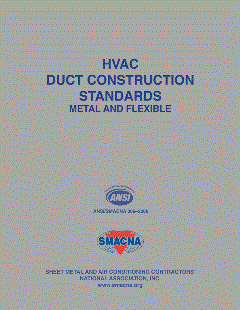Sheet metal forming and HVAC construction software maker Autodesk says it has enhanced its fabrication products lineup — Autodesk Fabrication CADmep, Autodesk Fabrication ESTmep, and Autodesk Fabrication CAMduct — with new improvements.
New functions include the ability to make Revit-using “deliverables” more easily. Many HVAC construction contracts ask for as-built models to be created in Revit, Autodesk says. With Fabrication CADmep 2016 software and the Autodesk Revit Extension for Autodesk Fabrication add-in, models coordinated in Fabrication CADmep software can be imported more seamlessly into Autodesk Revit 2016 software or Autodesk Revit MEP 2016 software and saved as an “RVT” file.
“We’ve tried to eliminate the need to fully remodel a file at the end of a project by refactoring the Revit and Fabrication CADmep products so they can more seamlessly connect,” said Andy Robins, software development manager at Autodesk. “We’ll continue to build on this technology and improve the functionality over time, but for now, it should open the doors to more projects for smaller contractors and greatly simplify the process for those contractors who were already having to remodel in Revit.”
A sample data set that Autodesk says is comprehensive and unlocked makes amending or duplicating components more easily to meet ductwork fabrication companies’ needs.
“It is important to acknowledge that each business is different,” said Steven Butler, industry strategy manager at Autodesk. “From different fabrication specifications, to agreements and preferences for different manufacturers. By unlocking the comprehensive dataset we already ship with the products, we are making it easier for companies to customize the software to meet the needs of their specific business or the specific project they are working on.”
Also new is an application program interface, which Autodesk says creates customization flexibility for sheet metal works customers. All three fabrication software products now has an API as standard.
“For years customers have been using scripts and AutoLISP to add business-specific functionality to the products that helps them to improve fabrication and installation,” said Robins. “The new API makes this process even easier, as it is based on more versatile coding languages. I can’t wait to see what our customers come up with to really hone in processes that are specific to their business.”
Butler said the enhancements have long been sought by HVAC market Autodesk users.
“The latest releases of these tools include enhancements that have been at the top of our request list in the industry,” says Steven Butler, industry strategy manager at Autodesk. “We’ve provided solutions for some short-term challenges that many contractors face, plus extended unique interoperability between platforms that will position customers in the industry for years to come.”









